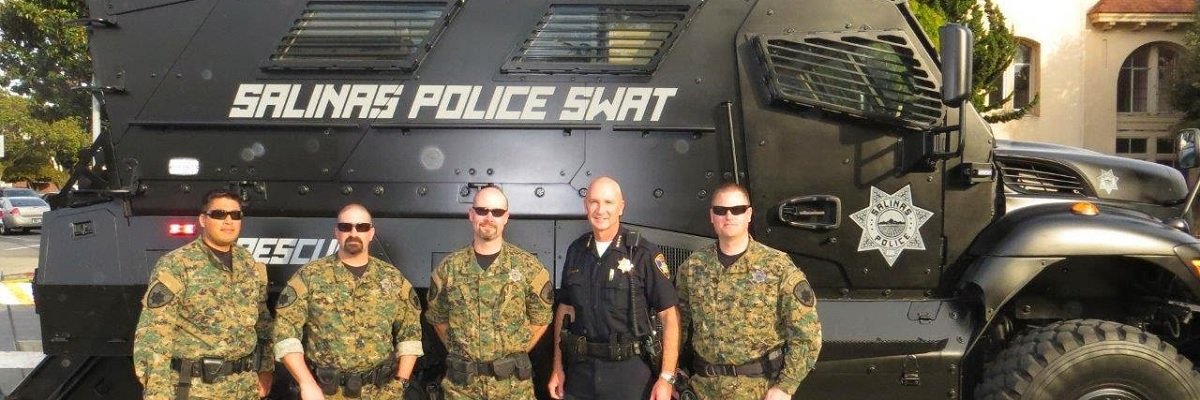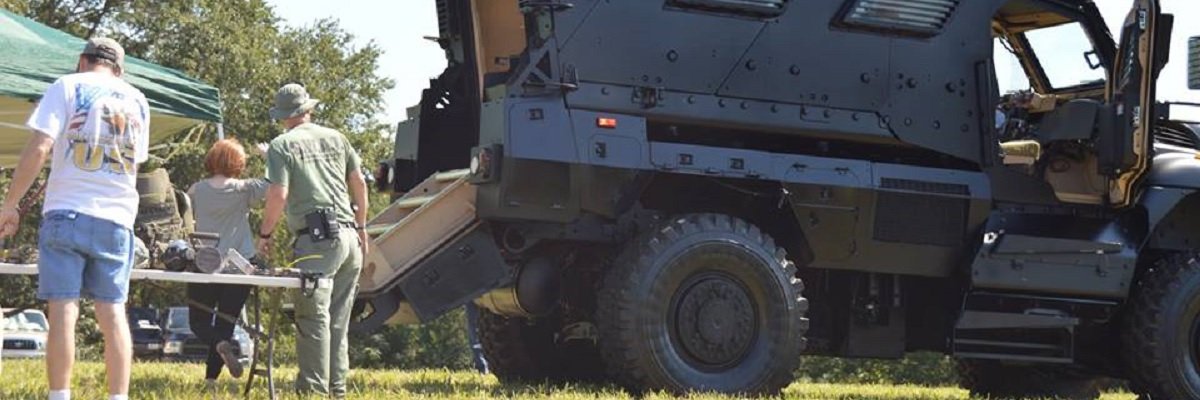Much like our previous audit of Texas police departments’ proposals to train officers in the operation of military-grade armored vehicles, similar documents from Californian law enforcement agencies revealed that there is no clear qualification standard when it comes to use of 18-ton Mine-Resistant vehicles.
The biggest discrepancy between these proposals is the number of hours police departments are allotting to learn how to properly deploy and operate an MRAP. Some cities, like Clovis, California City, and West Covina opt for training periods spanning multiple days and totaling upwards of 24 hours each - in the case of Garden Grove, the agency require 20 hours of driving in addition to instruction time.
However, there are also agencies like Redlands PD whose proposal outlines a single hour of practicing maneuvers.
Or in Amador, a whopping 15-20 minutes.
While time requirement fluctuated wildly, two amounts - four and 16 hours - came up the most frequently, and in almost every case is accompanied by a company like Delia Tactical International. Here money appears to be a differentiating factor in how much time officers get to study their 1033 endowments - for 16 hours, Delia Tactical charges $300 per officer enrolled …
But the far more common duration listed on the training proposals was four hours, often led by officers within the department who either had previous military experience or attended a private instruction course like the one offered by Delia Tactical.
Without clearly defined guidelines as to who is allowed to instruct MRAP training and how much time should be dedicated to training officers, the decision for both seems to be found in between the competing factors of funds and professionalism.
In addition to who conducts the training and for how long, another major point of departure between agencies is how much detail to provide about the time spent. For example, while Clovis PD’s proposal accounts for its 40 hours of instructions with a breakdown of how each hour will be spent, it doesn’t do much to explain what exactly is being instructed.
Conversely, Azusa PD includes exact vehicle specifications that each officer will learn during their training, but does not have much in the way of a plan to impart these.
In almost all cases, training consists of instruction on how to operate the controls and maintain the vehicle. Verification that officers understand these procedures is summed up by the phrase, “Given an exam, the student will be able to ___” – part of a proposal boilerplate found in many of the proposals from California police departments, as well as five of the plans we received from Texas.
What the phraseology of the form of proposal don’t address, however, are the situations in which these vehicles will be responding to and how they’ll be deployed.
Gardena does a relatively good job of this, including as part of its training both the “history and need of armored vehicles” as well as that of the 1033 program itself – even if the departments method of teaching these things is unclear.
Vallejo and Garden Grove both include an actual list of what situations their MRAP is approved for, instead of the vague summary found in the cover letter of many of these proposals – for “tactical and emergency conditions that warrant the use of armored protection or extreme rescue conditions.”
Notably, Garden Grove includes the vehicle’s use as part of riot policing measures – which is the exact sort of purposing that brought attention to 1033 military equipment after Darren Wilson’s non-indictment in 2014, and arguably pressured the Defense Logistics Agency to amend their policy to require training plans such as these.
One of the most balanced training plans was that of Citrus Heights, which actually includes hands-on training for emergency procedures, breaks down the lesson plan by hour, and describes exactly what the officers will be doing during each part of the session.
To look through a variety of different proposals for MRAP training in full, take a look at our California request page.
Image via Salinas County Police




